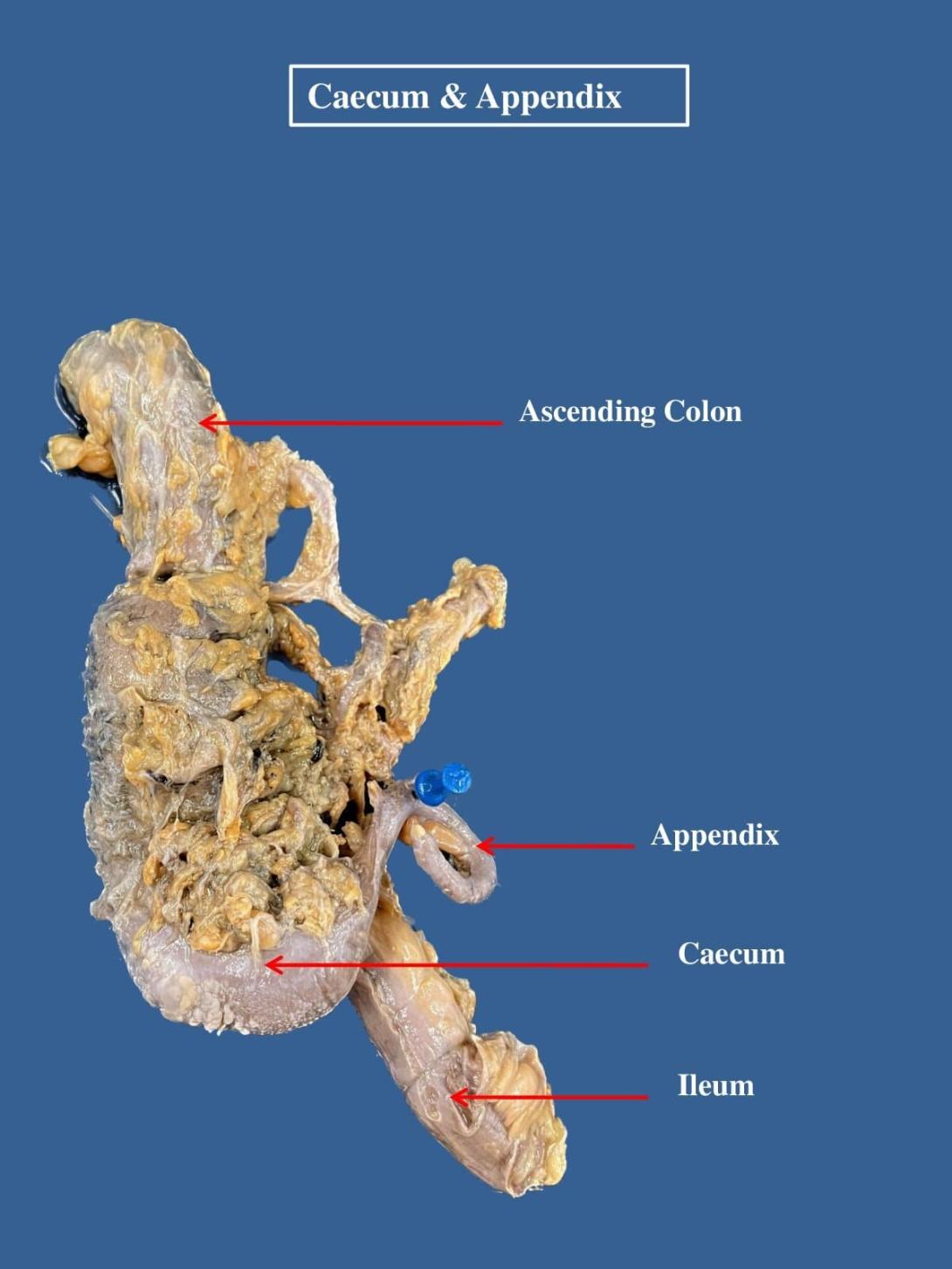The cecum is the most proximal part of the large intestine and is located between the ileum (distal small bowel) and the ascending colon.
Having served as a site for cellulose digestion in our ancestors, the cecum now simply acts as a reservoir for chyme which it receives from the ileum.
In this article, we shall look at the anatomy of the cecum – its anatomical structure, neurovascular supply, and lymphatic drainage.
Anatomical Structure and Relations
The cecum is the most proximal part of the large intestine and can be found in the right iliac fossa of the abdomen. It lies inferiorly to the ileocecal junction and can be palpated if enlarged due to faeces, inflammation, or malignancy.
The cecum derives its name from its inferior blind-end (‘cecum’ is derived from the Latin word ‘caecus’, meaning ‘blind’). Superiorly, the cecum is continuous with the ascending colon. Unlike the ascending colon, the cecum is intraperitoneal and has a variable mesentery.
Between the cecum and ileum is the ileocecal valve. This structure prevents reflux of large bowel contents into the ileum during peristalsis and is thought to function passively, as opposed to a defined muscular sphincter.
Note: In cases of large bowel obstruction, an incompetent ileocecal valve is paradoxically advantageous as it allows the retrograde passage of bowel contents back into the ileum. This helps to decompress the cecum and prevent “closed loop” obstructions and perforations.
By TeachMeSeries Ltd (2023)
Fig 1 – The cecum. Note the blind end inferiorly, and its continuity with the ascending colon superiorly.

